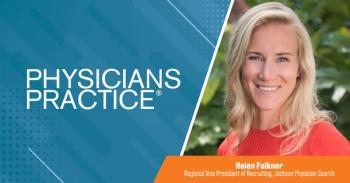
Rethinking software selection
By putting functionality in the forefront, you can watched your practice efficiencies multiply.
Independent physicians face a number of challenges — growing administrative burdens, revenue cycle difficulties, evolving care models, and staffing shortages—to name a few—all while managing care during a global pandemic. The key to my practice’s success is software that allows me to run a cohesive and unified practice. When deciding what type of software your practice needs to succeed, I urge you to first think about the scope of functionality you’d like it to achieve. Here’s how:
Doing your homework
To begin your new software system exploration, consider the specific patient populations served and your ideal workflow. Are your patients tech-savvy? Do they want telemedicine appointments to maintain continuity of care? Has the pandemic changed their expectations about digital care, or the way you communicate with them?
In my plastic surgery practice, many of my patients are babies born with cleft lips, cleft palates, and craniosynostosis. Remote visits were a must-have for meeting anxious parents to discuss potential treatments. Certain tools can bring comfort in unexpected ways. As patients and their families have gotten more used to telemedicine, I’ve experienced significant practice growth due to the seamless nature of these visits that require almost no overhead.
When evaluating telemedicine options, I recommend software that’s unified with your EHR so workflow is seamless, meaning you can schedule and consult all in one place. This has helped me be more efficient and more cost-effective. In fact, an all-in-one system that merges telemedicine options with practice management functions, achieves EHR integration, and streamlines billing and reporting services is typically the most cost-effective and efficient solution.
Ask colleagues (and competitors!) what has worked—and not worked—for them. I reached out to vendors directly to watch demos and asked sales reps pointedly about how their products work.
Next, think about how these solutions can solve daily pain points in your workflow. With the AdvancedMD system I selected, it’s seamless for my staff to complete notes, and the charts are automatically updated and submitted for billing. When evaluating different software options, ensure the charting setup will integrate seamlessly, so your staff can always help the patient navigate their immediate concerns. This will also ensure billing happens expeditiously, which helps patients more easily connect services with charges.
When researching software systems, find out how customizable the notes and templates are in consideration of your workflow and patient populations. In our practice, pediatric patients and cosmetic adult patients have unique clinical needs which means our reproducible notes and templates must be tailored for our various patients. The system also allows users to establish acronyms for common clinical terms that will autofill text regarding patient diagnosis and treatment. This saves time for our medical assistants who scribe. Finally, any software system should be intuitive for new users so your practice staff isn’t bogged down by training.
Connecting with patients
You got into medicine because you want to help patients, so consider how your software will manage their care better. A key consideration is its ability to integrate patient relationship management functionality into daily operations. Plastic surgery patients generally appreciate top-of-mind awareness from their clinical team, which requires facilitating communication with patients however they prefer. The software you choose will ideally generate automatic reminders for appointments, solicit feedback, and share other communications via text message or email.
It also benefits patients to have a portal that facilitates engagement. Our patients can log in to the patient portal at all hours and send messages to our office, request prescription refills, or pay a bill electronically. They can also fill out forms prior to appointments. Patients can reach out to us whenever they want —not only during our office hours. We value their time and facilitate these important practice functions at the time and place of their choosing. Further, staying well connected to them improves payment collections on the practice side. Finally, providing 24/7 availability to our patients for so many of our services has greatly reduced the number of incoming calls that my office has to manage.
Embracing technology
The pandemic has shown all of us in independent practice that to thrive we must embrace technologies that were once considered “disruptive.” By implementing all-in-one software, you can facilitate and digitize the most important components of your practice, empowering both patients and staff. I am now reaping the rewards of selecting a convenient, easy-to-use system that does it all for my independent practice.
Devan Griner, MD, is board-certified plastic surgeon at Peak Plastic Surgery, based in Provo, Utah. He uses the all-in-one cloud suite from AdvancedMD.
Newsletter
Optimize your practice with the Physicians Practice newsletter, offering management pearls, leadership tips, and business strategies tailored for practice administrators and physicians of any specialty.








